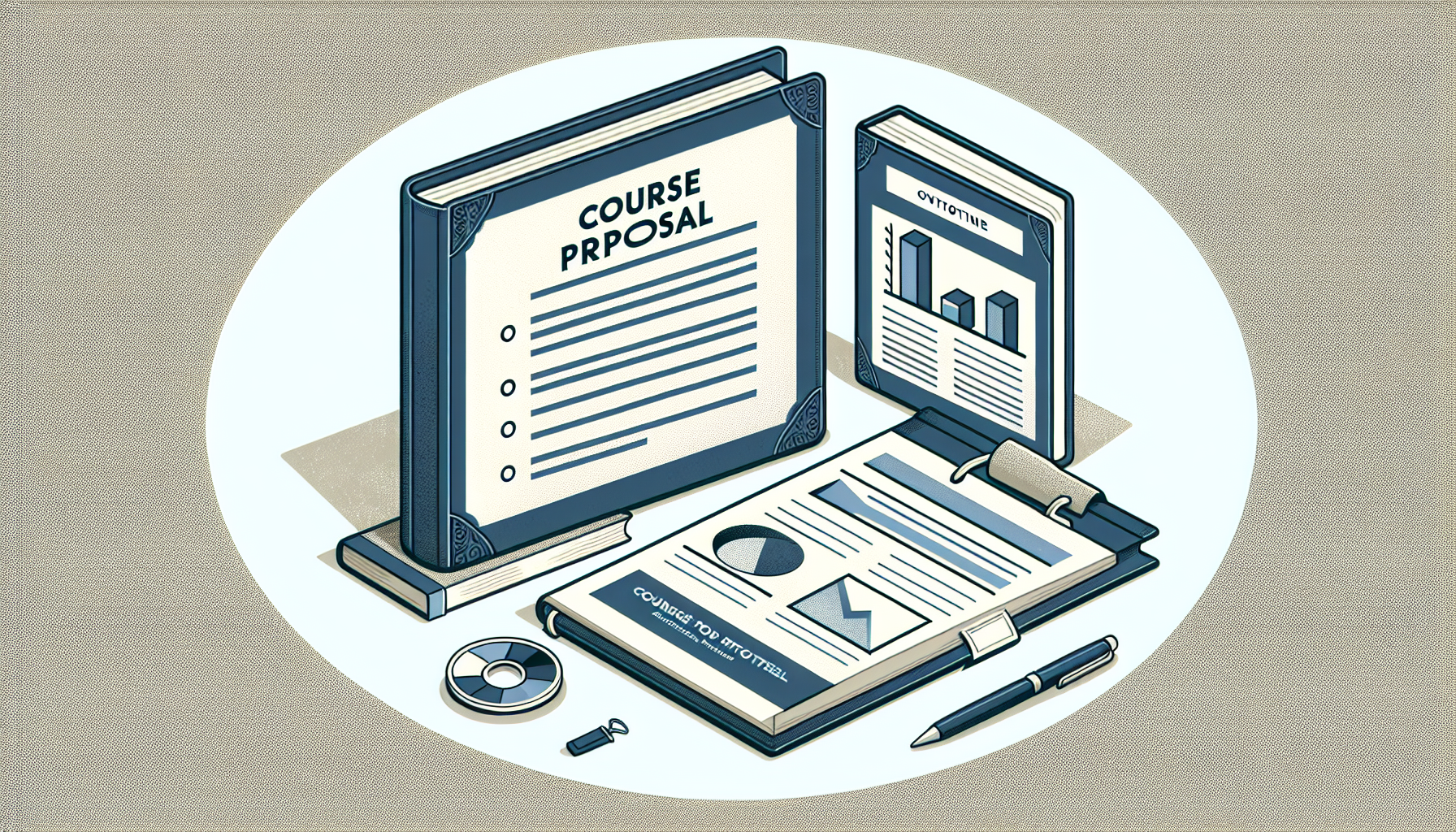Writing a course proposal can feel like a daunting task, can’t it? You might be wondering where to begin or how to make your proposal stand out. It’s a bit like preparing a dish for a potluck—everyone wants something delicious, and you want to be the star chef!
But don’t worry! If you stick around, I’ll guide you through each step of the process. Together, we’ll cover everything from defining your course’s purpose to creating an engaging presentation that’ll wow your audience.
By the end, you’ll have a solid framework for writing a course proposal that not only meets expectations but also gets you excited about sharing your knowledge. Let’s dive in!
Key Takeaways
Stefan’s Audio Takeaway
- Clearly define the purpose of your course and how it fits existing needs.
- Identify your target audience and tailor content to their knowledge level.
- Conduct a needs assessment to ensure market demand for your course.
- Establish SMART objectives and a clear course description.
- Create a detailed course structure with logical modules.
- Specify clear learning outcomes and diverse assessment methods.
- Incorporate innovative elements to enhance engagement.
- Align your proposal with institutional goals for better acceptance.
- Design an appealing presentation using visuals for clarity.
- Include a budget and timeline to show preparedness.
- Thoroughly proofread your proposal to ensure professionalism.

1. Define the Purpose of Your Course Proposal
The first step in writing a course proposal is to clearly define its purpose. What are you hoping to achieve with this course? Are you aiming to fill a gap in the current curriculum or introduce a hot new topic?
Your purpose should align with institutional goals and address the needs of your target audience.
Try to be specific here. For instance, if your course is about data analysis, explain how knowledge in this area can help students tackle real-world problems, like analyzing financial data or predicting trends using technology.
2. Identify Your Target Audience
Next, you need to pinpoint who your course is for. This isn’t just about age or demographic; it’s about understanding their needs, existing knowledge, and what they hope to gain from your course.
Are you targeting beginners, or do you need to aim for advanced learners? Tailor your content accordingly because a course for tech-savvy adults will look very different than one aimed at high school students.
Consider running a quick survey or focus group to gather insights. This feedback can help shape your proposal and make it more appealing.
3. Conduct a Needs Assessment for Your Course
A needs assessment helps you evaluate whether there’s a genuine interest or gap in the market for your course. Start by diving into some basic research.
Look at current offerings at your institution and similar ones. Are there courses on data analysis, or do they stick to general statistics?
Engaging potential learners through informal interviews can also yield valuable insights. Ask them what they feel is missing and what skills they want to gain.
Moreover, consider leveraging data by reviewing real-time statistics, like industry growth in data analytics, which can serve as a solid justification for your course proposal.

4. Establish Clear Course Objectives and Description
When writing your course proposal, you should have a well-defined course description and set of objectives.
Your description should clearly articulate what the course entails. Include major topics, themes, and any unique features.
For example, if you’re proposing a course on data analysis, outline the specific analytical techniques and tools students will use.
Make your objectives SMART: Specific, Measurable, Achievable, Relevant, and Time-bound.
This gives clarity on what students can expect to learn and how they can measure their progress.
5. Create a Detailed Course Structure and Outline
A solid course structure acts as a roadmap for your proposal.
Break down your course into modules or weeks. Each section should have a clear aim and list of topics.
This not only helps your audience understand the flow of the course but also highlights its logical organization.
For instance, if your course covers financial data analysis, you could structure it into parts like introduction to financial principles, tools for analysis, and case studies.
6. Specify Learning Outcomes and Assessment Methods
Identifying clear learning outcomes is essential for your course proposal.
Outcomes should connect with your broader objectives and articulate what students will know by the end of the course.
For instance, “students will be able to interpret SQL queries to extract real-time data” is a clear outcome.
Along with learning outcomes, mention the assessment methods you will use to gauge understanding.
Incorporate different evaluation techniques such as quizzes, projects, and peer assessments to address diverse learning styles.
7. Engage with Innovative Course Elements
Incorporating innovative elements makes your course stand out.
This could involve hands-on projects, real-world case studies, or guest lectures from industry experts.
For example, using real-time data analysis of stock markets in your course could provide practical understanding.
Additionally, incorporating technologies such as virtual labs for data simulation can engage students more deeply.
8. Align Your Course with Institutional Goals
It’s crucial that your course proposal aligns with your institution’s objectives.
Do some digging into the strategic plan of your institution. Look for areas your course can contribute to.
For example, if your school emphasizes technology integration in learning, highlight how data analysis tools fit that narrative.
This alignment not only strengthens your proposal but also shows that you’re invested in the institution’s mission.
9. Design an Appealing Presentation for Your Proposal
The way your proposal looks matters.
A clean, well-organized presentation can make a huge difference.
Use visuals like graphs and charts to represent important data; they can help to clarify complex information.
Tools like Canva or PowerPoint can help you create visually appealing slides.
Make sure your proposal can be easily navigated, with a table of contents and headings that stand out.
10. Include a Budget and Timeline for Implementation
A budget and timeline often make or break a proposal.
Clearly outline how much funding you will need, which can include materials, guest speakers, and technology resources.
Also, provide a reasonable timeline for course development and execution. Consider seasonal factors like semesters or student availability.
Being clear about these details shows that you’re prepared and have thought ahead.
11. Proofread and Edit Your Proposal Thoroughly
A well-written proposal reflects professionalism.
Take the time to go through your proposal multiple times.
Check for grammar mistakes and ensure the flow of ideas is logical.
Having a colleague review it can catch errors you might overlook.
A polished proposal not only says “I’m serious” but also demonstrates your attention to detail.
FAQs
A course proposal outlines the objectives, structure, and goals of a new course. It serves to persuade stakeholders of its value and necessity within the educational framework, ensuring alignment with institutional objectives.
Your target audience can be identified by considering their demographics, needs, and learning preferences. Research existing courses and potential learner interests to ensure your proposal addresses their specific goals and requirements.
A course outline should include course objectives, a week-by-week schedule, key topics, major assignments, and assessment methods. Including detailed descriptions enhances clarity and aids in curriculum planning for instructors.
Review your institution’s mission statement, strategic plans, and educational goals. Tailor your proposal to demonstrate how your course supports these areas, showcasing its relevance to institutional objectives and student success.
